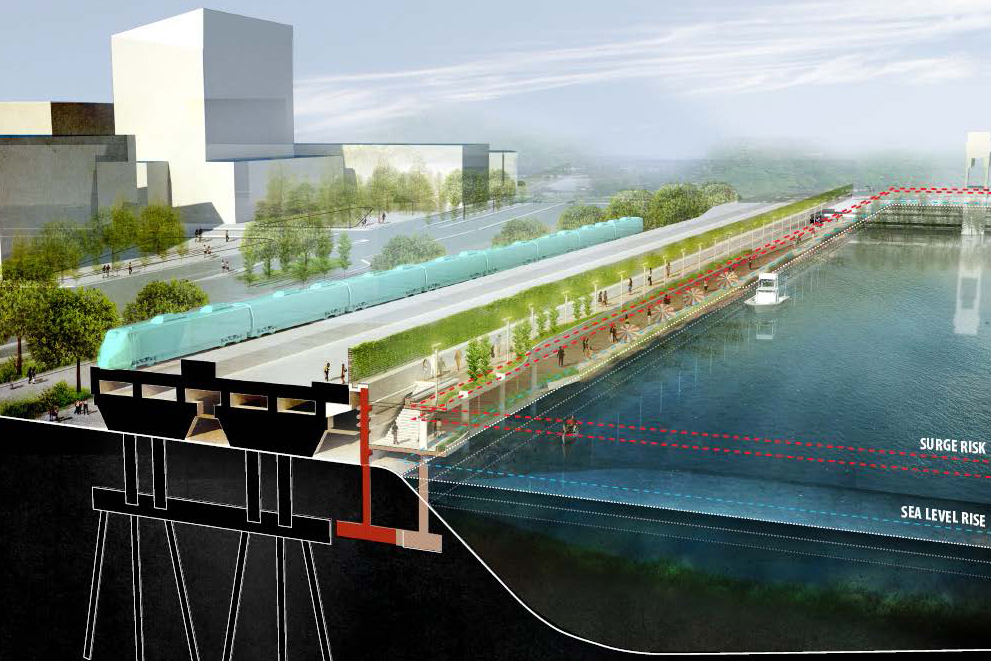For a small state, Connecticut has a lot of coastline. When Hurricane Sandy blasted through in 2012, giving a taste of a future of flooding and extreme storms, the state took action.
A coalition of regulators, municipalities, and UConn researchers designed a demonstration project in Bridgeport that works with the ecology and shoreline geography to protect critical energy infrastructure and residents in one of the state’s poorest, most vulnerable neighborhoods. Partners included agency staff from State Agencies Fostering Resilience and the Yale Urban Ecology and Design Lab.
The proposal just won $54.3 million in January of 2016 from the National Disaster Resilience Competition, held by the federal Department of Housing and Urban Development to distribute the last of the Hurricane Sandy recovery money.
Bridgeport’s South End is the perfect place to test the strategy. A direct hit by a major storm right now could cut off the neighborhood from the rest of the city, stranding thousands of residents and taking out critical energy substations and generation plants.
The neighborhood’s history stretches back to a pre-Civil War community of free black merchant marines and oystermen, but the community is currently cut off from the downtown by a disconnected street network, the sports stadium, and the University of Bridgeport.

